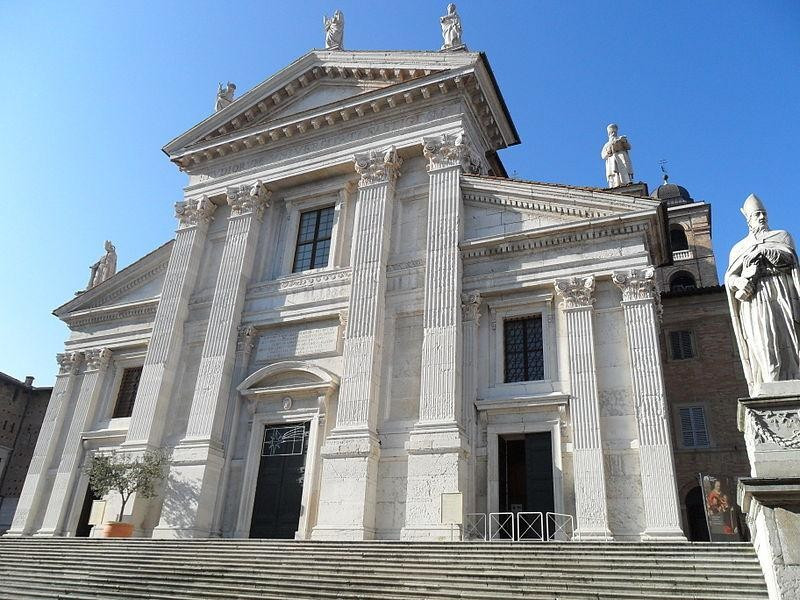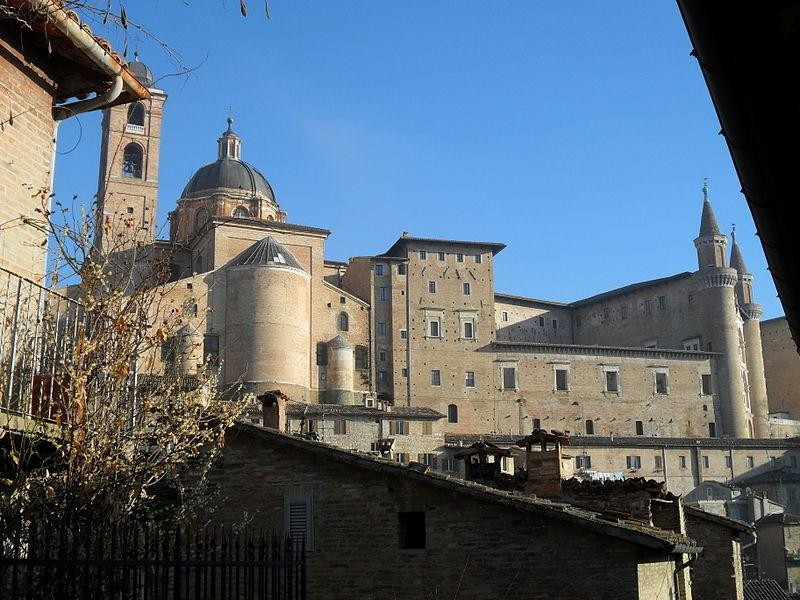Cattedrale di Santa Maria Assunta (Duomo)
Similar in size to the previous Renaissance Cathedral, demolished by the earthquake of 1789 and rebuilt in neoclassical style, was founded in 1021, replacing a previous church outside the walls. The original plant was rotated 90° with respect to the current one. The Renaissance building was finished in 1604, but was lost with the collapse of the dome and the project was entrusted to the new Roman architect Giuseppe Valadier, which ended in 1801. The facade, in Furlo stone, is a work by Camillo Morigia (1782): decorated with five statues on the pediment, representing the Theological Virtues, while the two slopes are placed St. Augustine (left) and St. John Chrysostom (right). The refined interior, work by Valadier, is an example of the Neoclassical style: Latin cross plant, with three white naves covered by a barrel vault, the crossing of the transept crowned by a majestic coffered dome. Among the works of art, it highlights in particular two paintings in the right aisle: "Saint Sebastian" (1557) and "Saint Cecilia" (1555). The Last Supper in the Holy Chapel (1603-1608) is a work by Federico Barocci; there are also an Assumption, by Carlo Maratta (1707) and "Birth of the Virgin", by Carlo Cignani (1708). In the spandrels of the dome, the rounds with the Evangelists are works by artists of the Roman school of the eighteenth century. On the main altarpiece, "Madonna with Saints protectors of Urbino" is a work by Christopher Unterperger.



